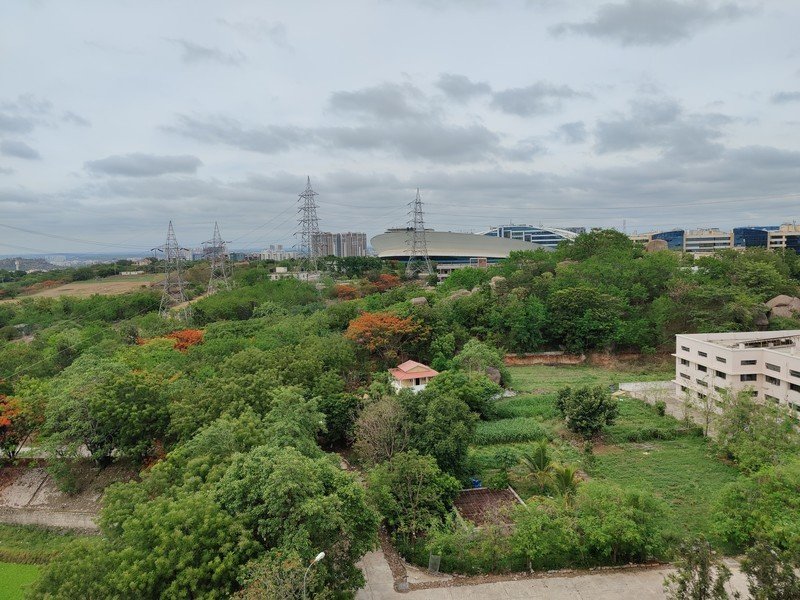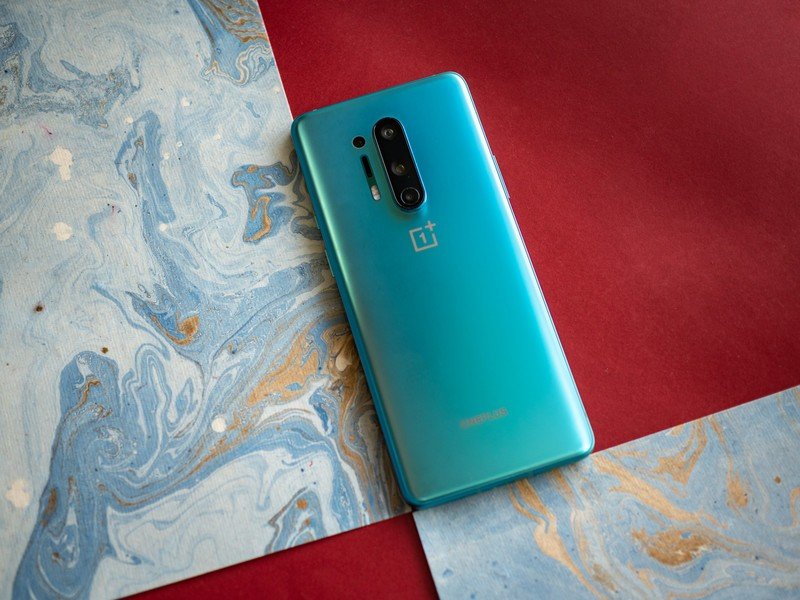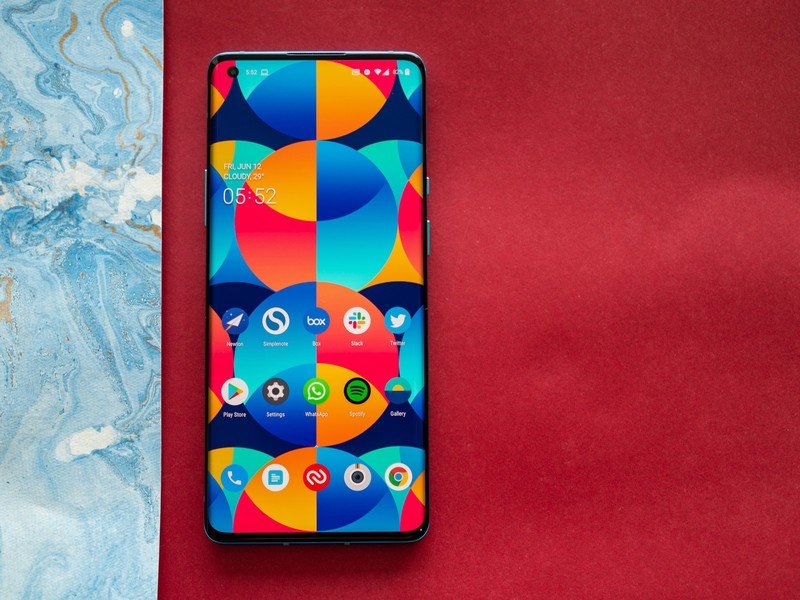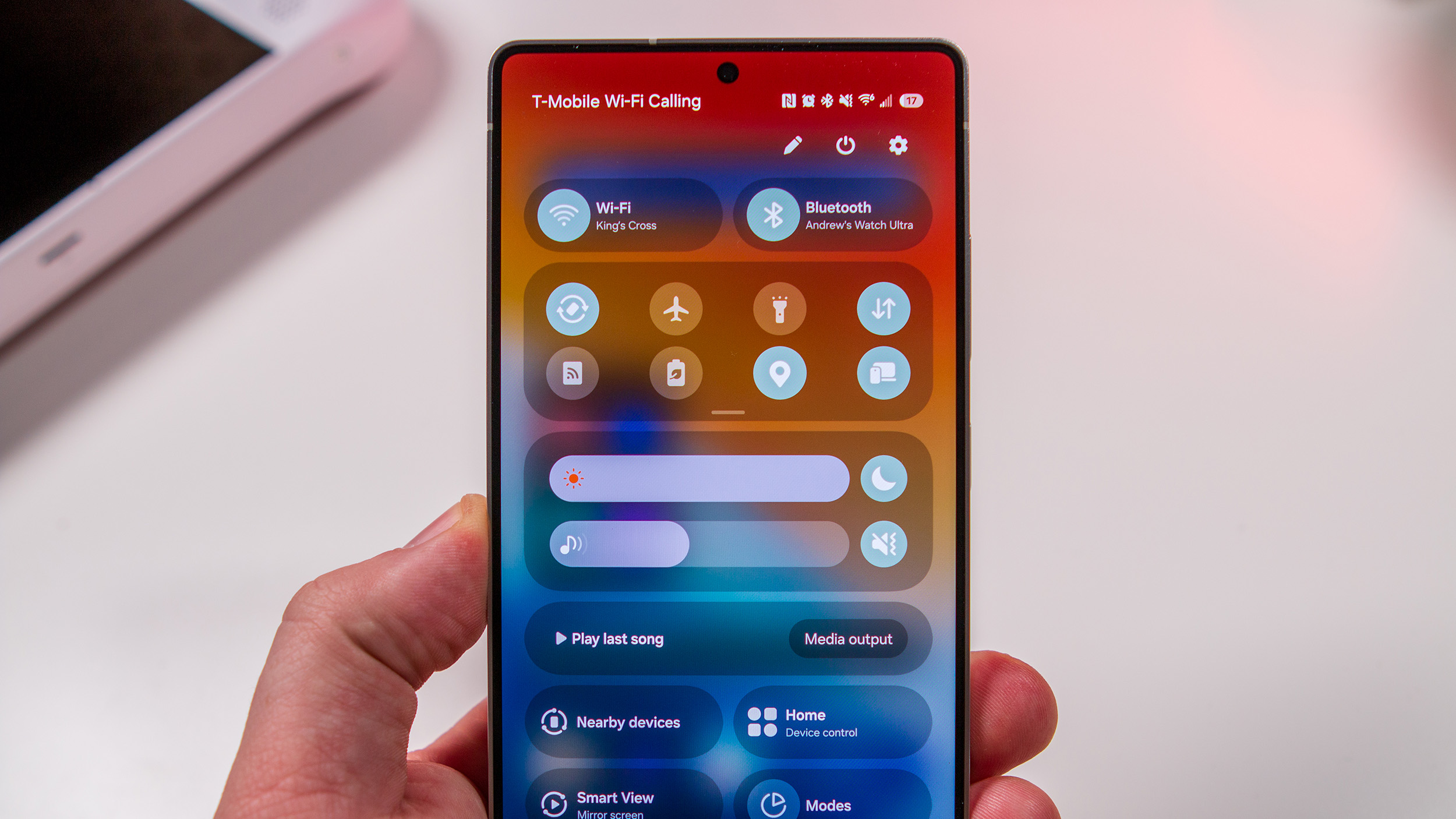Android Central Verdict
Bottom line: The OnePlus 8 Pro combines a gorgeous design with an incredible 120Hz AMOLED panel and the latest internal hardware money can buy today. There's also 30W wired and wireless charging, IP68 water resistance, upgraded cameras, and all-day battery life. Combine all of that with clean software in the form of OxygenOS and you get a great overall package.
Pros
- +
Sublime 120Hz AMOLED display
- +
Top-notch hardware
- +
All-day battery life with 30W wired and wireless charging
- +
Clean software with fast updates
- +
IP68 dust and water resistance
- +
Great cameras
Cons
- -
Sub-par selfie camera
- -
Software gremlins at launch
- -
Overheating issues
Why you can trust Android Central
OnePlus is the king of the hill in India. The Chinese manufacturer overtook Samsung to take top spot in the country's premium segment two years ago, and it has held onto that position. OnePlus' positioning as the go-to player in the value flagship segment allowed it to carve out a niche in India's handset market, and it is a strategy that has worked well for the brand.
With its latest phone, however, OnePlus is setting its sights squarely on Samsung. OnePlus made its foray into the "true" flagship category last year with the OnePlus 7 Pro, and this year's OnePlus 8 Pro is an extension of that effort. The phone has a gorgeous design with a dual-curved screen, and you get a stunning 120Hz AMOLED panel, the latest internal hardware, and for the first time on a OnePlus phone, IP68 rating along with wireless charging.
Now, there's no shortage of great phones in India. If all you're interested in is the latest Snapdragon 865 chipset, you can just pick up the iQOO 3 for ₹34,990 ($460) and call it a day. But specs alone don't make a phone stand out in 2020; the overall experience matters more these days, and in this area OnePlus knows what it is doing. OxygenOS is the best third-party UI you'll find on Android, and the clean interface coupled with fast updates gives OnePlus phones an edge.
Here's where things get that much more exciting: the OnePlus 8 Pro starts off at ₹54,999 ($725) in India. That's $175 less than what the phone costs in the U.S., and there's a good reason for it. India is OnePlus' largest market, and the company clearly wants to maintain its position as the leading manufacturer in the premium category. India is also a price-conscious market, and launching the phone for ₹68,000 — the $899 retail price it commands in the U.S. — would have made it dead on arrival. So OnePlus is essentially taking a hit on the margins to maintain its lead in the country.
And that makes an already great phone even better.
About this review
I am writing this review after using the OnePlus 8 Pro for 12 days in Hyderabad, India. The phone was connected to Airtel's 4G network for the duration of the review, and was running OxygenOS 10.5.10 out of the box. It did not receive any updates over the testing period. OnePlus India furnished the unit to Android Central for review.
OnePlus 8 Pro Design and display

The OnePlus 8 Pro feels like a continuation of the theme that OnePlus embarked upon last year with the OnePlus 7 Pro. It carries the same design aesthetic, with a dual-curved screen, ultra-thin bezels, and a frosted glass back with a matte finish. But there are a few welcome changes here: the curves at the back aren't as pronounced as last year, and that gives the OnePlus 8 Pro a much better in-hand feel. Unlike the OnePlus 7 Pro, I didn't feel the need to tuck the OnePlus 8 Pro into a case.
The OnePlus 8 Pro looks stunning in Glacial Green, and you get a great in-hand feel.
The big design change at the front is the hole-punch cutout for the front camera. OnePlus ditched the retractable camera module in favor of the cutout to make the chassis waterproof (and get the IP68 rating), so there's a cutout on the left side of the panel. All flagships in 2020 have a similar cutout, and it isn't too distracting.
Round the back, the matte finish is grippy and does a great job hiding fingerprint smudges. The phone is protected by a layer of 3D Gorilla Glass at the front and back, and the one time it took a tumble, it came away without any damage. The curves on either side of the screen extend further down the sides than last year, and that's one of the reasons why there aren't symmetric curves at the back — there's just no room to accommodate them on the mid-frame.
This glass-and-metal sandwich aesthetic isn't a new design paradigm, but OnePlus nailed the execution. The OnePlus 8 Pro feels every bit as premium as its price tag suggests, and the frosted back gives it an added touch of elegance. The phone is available in three color options — Glacial Green, Ultramarine Blue, and Onyx Black — and the Glacial Green option in particular is stunning. That shade of green combined with the frosted back makes the phone stand out, and the mid-frame has a matching shade of color.









Continuing on the design theme, the power button and alert slider are located on the right, with the power button positioned just where your thumb rests on the frame. The volume rocker is to the left, the dual SIM tray sits at the bottom to the left of the USB-C charging port, and the primary speaker is located to the right. There's a secondary speaker tucked away into a grille above the screen. The back is dominated by the oblong camera housing, which houses three camera modules. The 8MP zoom lens sits outside the island, and it is joined by a laser autofocus module and the LED flash.
You'll find the OnePlus logo below the camera housing, and the OnePlus moniker at the bottom. The company switched to a new logo with a curvilinear font and bold branding this year, and I'm not a fan of the new look. It just feels loud, and doesn't convey any meaning.
The one issue from a design point of view is that the camera module protrudes considerably from the frame, and that leads to a decent amount of wobble when the phone is laid flat on a surface. This is somewhat mitigated by the fact that the module is at the center (unlike the Mi 10), but the wobble is still noticeable.

OnePlus has steadily increased the screen size on its phones with every generation, and the OnePlus 8 Pro sports a 6.78-inch QHD+ Fluid AMOLED display. It has a resolution of 3168 x 1440, although out of the box the screen is set to FHD+. But the biggest change this year is the 120Hz refresh rate — up from the 90Hz panels OnePlus used last year.
In short, the display on the OnePlus 8 Pro is sublime: the colors are vibrant, you get a lot of customization options to tune the color balance to your liking, and the high refresh rate makes it a joy to use the phone. You'll instantly feel a difference when switching from a regular 60Hz panel to the OnePlus 8 Pro, and there's just a level of immediacy that you just don't find on a 60Hz screen. It is one of those features that you have to use to truly understand.
This is one of the best displays you'll find on a phone today.
The display on the OnePlus 8 Pro has HDR10+, and the panel gets sufficiently bright that using it under harsh lighting wasn't an issue. OnePlus optimized the software to take full advantage of the 120Hz panel, and that fact is evident the moment you start using the OnePlus 8 Pro. Everything just flies, and it is a very enjoyable experience. Streaming videos and playing games is particularly great because of the detailed stereo sound. It's not quite as loud as the Mi 10, but it is a far sight better than a single speaker.
In terms of customizability, you get to choose the color calibration between Vivid and Natural, and there's also an Advanced mode that lets you select the sRGB or DCI-P3 color profiles. You can also change the resolution to FHD+ or QHD+, change the scaling, choose what icons show up on the status bar, and even hide the camera cutout.
The one feature missing here is an always-on display. OnePlus instead offers an ambient display mode that wakes the screen for incoming notifications, but it's not quite the same thing. Also, because there's no notification light, you can set up a feature that lights up the sides of the phone for incoming notifications, dubbed Horizon light.
Overall, there's a lot to like with the display on the OnePlus 8 Pro. It is one of the best panels you'll find today, and the 120Hz refresh rate just makes it that much more exciting.
OnePlus 8 Pro Hardware and battery life

OnePlus made its name on the back of performance, and the OnePlus 8 Pro ticks all the right boxes. The phone is powered by Qualcomm's latest Snapdragon 865 chipset, and you get 8GB of LPDDR5 RAM as standard along with 128GB of UFS 3.0 storage. That particular model is available in India for ₹54,999 ($725), and there's a 12GB/256GB option that is available for ₹59,999 ($790).
| Specs | OnePlus 8 Pro |
|---|---|
| Software | Android 10, OxygenOS 10 |
| Display | 6.78-inch 120Hz AMOLED |
| Chipset | Snapdragon 865 |
| RAM | 8GB/12GB |
| Storage | 128GB/256GB |
| Rear Camera 1 | 48MP ƒ/1.78 (OIS) |
| Rear Camera 2 | 8MP ƒ/2.4 tele (OIS) |
| Rear Camera 3 | 48MP ƒ/2.0 wide (120°) |
| Rear Camera 4 | 5MP ƒ/2.4 |
| Front Camera | 16MP ƒ/2.45 |
| Connectivity | Wi-Fi 6, BT5.1, NFC |
| Battery | 4510mAh, 30W wired/wireless |
| Security | In-display fingerprint sensor |
| Colors | Glacial Green, Ultramarine Blue, Onyx Black |
| Dimensions | 165.3 x 74.3 x 8.5mm199g |
For some context, the 12GB/256GB option of the OnePlus 8 Pro costs $109 less than the base variant of the phone in other markets. Indian customers are getting a real bargain here, and that fact is clearly highlighted as you run down the hardware on offer.
The OnePlus 8 Pro is the first phone from the manufacturer to offer an IP rating, and you're getting the same IP68 protection as the Galaxy S20 series and other flagships. And you also get 30W wireless charging, the same as wired charging.
The OnePlus 8 Pro has a Wi-Fi 6 modem, and I had rock-solid connectivity throughout my house. Similarly, I didn't face any issues with Bluetooth either, and call quality was great as well. Like most phones releasing in India this year, the OnePlus 8 Pro has Wi-Fi calling out of the box, and you'll be able to use it with Airtel and Jio.
Oh, and the phone has 5G connectivity, but you won't be able to use it in India for at least a few years. For now, the 5G moniker is just there for novelty.
Now, although the OnePlus 8 Pro is packing the latest hardware you'll find today, it isn't without its issues. I noticed lag a few times when navigating the interface, and the phone just froze several times during the testing period. It occurred enough times to merit a mention, and in two instances I had to restart the phone to get it to work again.
This isn't the first time I've faced such issues on a OnePlus phone. This is usually the case with the Chinese company's latest phones, and for what it's worth OnePlus does a good job at fixing performance-related issues. If history is any indication, these issues should be resolved a few weeks down the line. So if you're interested in buying the OnePlus 8 Pro right away, know that you'll have to put with a few lingering bugs.
In fact, this is turning into a persistent problem for the manufacturer. If OnePlus wants to be taken seriously as a premium brand, it cannot have these sort of issues on every new phone it launches — it needs to do a better job addressing bugs before its phones go out to customers.

On the subject of issues, I found that the back of the phone got uncomfortably hot during gaming sessions or while streaming video. Again, this wasn't the case on other Snapdragon 865 phones I tested this year, so I wanted to highlight it. The area around the flash module in particular tends to overheat at times. I also had to turn off the battery optimization mode as it was interfering with push notifications from the likes of Newton Mail.
There are a few bugs, but the hardware itself is right up there with the best that Android has to offer.
But aside from the errant lockups, it was smooth sailing on the OnePlus 8 Pro. The 120Hz display is sublime, and the phone clearly has power to spare — it handles intensive games and mundane everyday tasks with ease. OnePlus also partnered with Epic Games to enable 90fps in Fortnite, and it is a delight to play the game on the OnePlus 8 Pro.
Another area where the OnePlus 8 Pro excels is haptics. You get a powerful vibration motor that has detailed haptic feedback, and it makes a difference in day-to-day use. I used to disable haptic feedback, but most phones I tried out this year featured decent vibration motors, so it is nice to see Android manufacturers putting some thought into this area. The OnePlus 8 Pro also has a reliable in-screen fingerprint sensor, and I had no issues with the module.
You will have to wait a few weeks for OnePlus to fix the lingering bugs, but it is worth the wait for the hardware on offer here.

The OnePlus 8 Pro has a 4510mAh battery, and it manages to deliver a day's worth of use without any issues. I routinely averaged over five hours of screen-on-time spread over the course of 16 hours, and even with heavy usage the battery lasts until the end of the day. Unlike the Galaxy S20 series, you have the option of using the 120Hz mode with the resolution turned up to QHD+, but doing so leads to a heavier toll on the battery.
For the most part, I just used the phone with FHD+ resolution at 120Hz. There really isn't a noticeable difference in clarity in FHD+ mode, and there's the added bonus of better battery life. When you do need to charge the phone, there's 30W fast charging in the form of Warp Charge 30T. It takes just 25 minutes to charge the battery from flat to 50%, and a full charge to 100% takes just under an hour with the bundled 30W charger. The phone also charges other devices wirelessly.
With 30W wired and wireless charging, you'll never have to leave your phone plugged in overnight.
The good news is that the OnePlus 8 Pro has wireless charging. OnePlus fans have been clamoring for the feature for several years now, and the company has finally delivered. However, I couldn't test the 30W wireless charging because the Warp Charge 30 Wireless Charger isn't on sale in India just yet, and there's no mention of when it will be available. I tried out Xiaomi's 30W wireless charger with the device, but that was limited to 10W for the OnePlus 8 Pro.
At ₹3,999, the Warp Charge 30 Wireless Charger costs significantly more than Xiaomi's 30W wireless charger, which is available in India for ₹2,299. So while it is a great that you'll finally be able to charge a OnePlus device wirelessly, you'll have to wait a little bit longer to take advantage of 30W wireless charging.
OnePlus is also rolling out an optimized charging feature where the battery only charges up to 80% and then cuts off. The other 20% is filled up just before you wake up, with the feature designed to prolong battery life. First, the phone estimates your usage habits by when you switch on the screen for the first time in the day and when you leave it plugged in at night, and tries to figure out when it should start charging the other 20% so that the battery is full just before you wake up. Finally, the phone charges other Qi-enabled devices wirelessly, just like the Galaxy S20 series.
OnePlus 8 Pro Cameras

Look, I'll get this out of the way first. OnePlus made a few welcome changes to the cameras this year, and while they're a step in the right direction, the OnePlus 8 Pro still doesn't measure up to the best that Google, Huawei, Samsung, and Xiaomi have to offer. OnePlus still has a lot of ground to cover, particularly when it comes to image processing. That said, there are a lot of positives.
There are welcome changes here, but OnePlus isn't on the same level as Google and Samsung yet.
First, a brief overview of the camera hardware: the OnePlus 8 Pro features a 48MP f/1.78 (Sony IMX 689) primary camera with OIS and EIS, and you get a secondary 48MP f/2.2 wide-angle lens with a 120-degree field of view, 8MP f/2.4 zoom lens with OIS, and a 5MP color filter lens. As is the case with most phones with high-resolution cameras, the OnePlus 8 Pro leverages four-to-one pixel binning to produce 12MP shots.
The color filter camera is disabled out of the box in India, but OnePlus has confirmed it will enable the module via an OTA update by the end of June. Its omission is brought on by revelations that the lens could see through plastics and thin layers of clothing, so OnePlus made the right call by disabling the camera while it works on a fix.
The camera interface itself should be familiar to OxygenOS users — all the shooting modes are laid out in a ribbon at the bottom, and there are toggles to switch between the three cameras, along with toggles for timers, flash, resolution (you can take full-res 48MP shots), macro, and filters. Auto HDR is enabled out of the box, and you get to select from a wealth of options in the settings: choosing a grid, watermarking your photos, shutter sound, storing location data, histogram, switching to HEVC video, and more.











Daylight shots from the OnePlus 8 Pro are full of detail, with great dynamic range and accurate colors, and auto HDR does a decent job bringing out the highlights. OnePlus also made a lot of strides when it comes to low-light photography, with the OnePlus 8 Pro taking usable shots. You get a lot of noise and colors look washed out, and when you pit it against the likes of the Mi 10, the Galaxy S20, and the Pixel 4 XL, it becomes clear that OnePlus still has a long way to go in this area.
The dedicated Nightscape mode fixes a few of these issues, but again, it's not quite on the same level as what you get with other flagships. As for the wide-angle camera, OnePlus is using the same 48MP module as the primary lens on the 7 Pro, and you get vibrant shots in daylight. This was a major issue last year as the wide-angle lens produced washed-out shots, but that thankfully isn't the case on the OnePlus 8 Pro.
The wide-angle lens is fantastic, but the 16MP selfie camera is a letdown.
The wide-angle lens also pulls double duty as a macro shooter, and the result is that the OnePlus 8 Pro takes great macro shots. This is the first time I got decent macro shots from a phone, and the best part is that the viewfinder automatically switches to macro mode when it detects you're in close proximity to a subject. As for the zoom lens, it is unchanged from last year, and you get 3x hybrid zoom, but with the shots at 3x zoom factor looking muddy.
OnePlus also made a lot of changes to video recording, and the OnePlus 8 Pro does a decent enough job in this area. But once again, it is not on the same level as the Xiaomi Mi 10. You also miss out on 8K video recording, and while you may not use that particular feature a lot, there's the fact that Xiaomi is offering it on the Mi 10.
Finally, there's the 16MP camera at the front. I'm not sure if it's an issue with my unit, but I failed to get any decent photos from the front-facing camera module. Images were full of noise, underexposed, and without any sort of vibrancy. With even budget phones offering better selfie cameras, the 16MP lens on the OnePlus 8 Pro is a letdown. I don't take many selfies, but I make a lot of video calls, and the selfie camera's deficiencies showed up in this area.
There are lots of meaningful changes here, but the OnePlus 8 Pro is just lacking that final bit of polish that's needed to turn a great camera into an outstanding one.
OnePlus 8 Pro Software

Over the last three years, OnePlus turned OxygenOS into the best third-party skin on Android. It did so by adding meaningful customization options while retaining a clean interface. That combination worked exceedingly well for the company, and the result is that OxygenOS is just about the most well-optimized skin on Android.









Source: Android Central
The OnePlus 8 Pro comes with OxygenOS 10.5.10 out of the box, and the interface itself is based on Android 10. Now, OnePlus added a host of features to OxygenOS last year, including a native screen recorder, Zen Mode, a new gaming mode dubbed Fnatic Mode, and a Work-Life Balance feature. While there's not a whole lot to talk about in terms of new features this time around, OxygenOS 10 hasn't lost any of that fluidity that makes OnePlus phones stand out.
The best part about OxygenOS is that it's aimed at both mainstream and power users alike. You get a lot of powerful customization options in the settings, but you don't need to mess with them at all if you don't want to. It's this simplicity that makes it easy to recommend OxygenOS.
OnePlus also does a great job with updates, with the manufacturer being one of the first to roll out the Android 10 update to its devices last year. If you're feeling adventurous, you can install Android 11 Beta on your phone right now.
OnePlus 8 Pro Alternatives

If you're looking to buy a flagship Android phone in India, the obvious contender to the OnePlus 8 Pro is the Xiaomi Mi 10, with the phone retailing for ₹49,999 ($660) in the country. The Mi 10 has the same high-end internals, but it is packing an FHD+ panel with 90Hz refresh rate, and MIUI 11 still has its drawbacks. That said, it features a 108MP camera at the back that takes incredible images in all lighting conditions. The Mi 10 also feels more premium, and it has the best camera in this category.
There's also the Galaxy S20 series, with the regular Galaxy S20 starting off at ₹70,499 ($930). But with the S20 running the Exynos 980 in India, you're not quite getting the same level of performance.
It's basically between the OnePlus 8 Pro or the Mi 10. The Pixel 4 series never made it to India, and with the S20 not offering the same amount of value, it's down to whether you want a great camera or clean software. If you want the former, the Mi 10 is the better choice here. Otherwise, the OnePlus 8 Pro is the way to go.
OnePlus 8 Pro Should you buy it?

The OnePlus 8 Pro is the most polished phone OnePlus has released to date. There was never any doubt that the phone would pack the latest internal hardware — OnePlus' messaging revolves around speed, so it's always fair to assume that you'll get the best possible specs from a OnePlus device.
Buy the OnePlus 8 Pro for the enticing hardware, stay with it for the sublime software experience.
But in recent years, OnePlus fine-tuned the software to deliver the best overall experience. There are dozens of phones powered by Qualcomm's latest silicon. None of them feel quite as fluid as the OnePlus 8 Pro. And that comes down to system-level optimizations: OnePlus really is in the lead in this area, and every time I use a OnePlus phone I'm reminded of just how fast it feels versus the competition.
That's the takeaway here. Yes, the OnePlus 8 Pro has a stunning 120Hz display and the hardware will hold up for several years, but it's the software experience that will make you want to use the phone day in, day out. It's also good to see that the OnePlus 8 Pro isn't missing out on the extras: you get IP68 dust and water resistance, and you get 30W wired and wireless charging.
The one downside here is the camera: I'm not saying that the OnePlus 8 Pro has a bad camera; it's just not on the same level as the Mi 10. If you're okay with that, you'll love what the OnePlus 8 Pro has to offer. The phone is going on sale in India from June 15, with the base 8GB/128GB model available for ₹54,999 ($725).
4 out of 5
Ultimately, it comes down to the software experience. If you want a clean software with fast updates, the OnePlus 8 Pro is the default choice in this category.
Buy it if
- You want a phone with the latest hardware and a vibrant 120Hz display
- You're looking for all the extras, including fast wireless charging and IP68 dust and water resistance
- You need clean software with fast updates and no bloatware
Don't buy it if
- You need a flagship-tier camera

The default option in 2020
The OnePlus 8 Pro combines a gorgeous design with an incredible 120Hz AMOLED panel and the latest internal hardware money can buy today. There's also 30W wired and wireless charging, IP68 water resistance, upgraded cameras, and all-day battery life. Combine all of that with clean software in the form of OxygenOS and you get a great overall package.

Harish Jonnalagadda is Android Central's Senior Editor overseeing mobile coverage. In his current role, he leads the site's coverage of Chinese phone brands, networking products, and AV gear. He has been testing phones for over a decade, and has extensive experience in mobile hardware and the global semiconductor industry. Contact him on Twitter at @chunkynerd.

